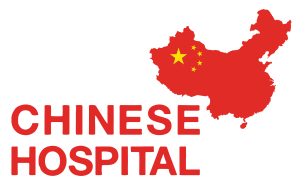As a gene therapy specialist deeply engaged in the clinical and translational research landscape of China, I have witnessed firsthand how gene therapy is redefining modern medicine. What was once a theoretical vision has now emerged as a therapeutic reality—offering potential cures for diseases previously deemed incurable.

In China, alongside international breakthroughs, we are seeing rapid integration of gene therapy into both clinical trials and early commercial use, especially for hematological disorders, oncology, and rare genetic conditions.
What Is Gene Therapy?
Gene therapy is a revolutionary biomedical technique that modifies, replaces, or introduces genetic material into a patient's cells to correct genetic disorders at their root cause. It offers curative potential—not merely symptom management.
Three Main Approaches in Gene Therapy:
- Gene Replacement – Introducing a functional copy of a gene to substitute a mutated or missing one.
- Gene Inactivation (Gene Silencing) – Disabling a malfunctioning gene that causes disease.
- Gene Augmentation – Adding a novel or modified gene that enhances cellular function or delivers therapeutic agents.
In China, both in vivo (direct injection) and ex vivo (cell extraction, gene editing, and re-infusion) strategies are actively being explored, particularly within CAR-T and hematopoietic stem cell platforms.

How Does Gene Therapy Work?
Most gene therapies utilize viral vectors (such as adeno-associated viruses, AAVs, and lentiviruses), carefully engineered to deliver therapeutic genes into target cells with high specificity and minimal immune response. In advanced Chinese research institutions like Beijing Genomics Institute and Shanghai Cell Therapy Group, new non-viral delivery systems such as nanoparticles and lipid carriers are also under development, enhancing safety and scalability.
Once delivered, the gene may:
- Produce essential proteins previously lacking due to mutation.
- Interfere with disease-causing pathways.
- Stimulate immune responses, particularly in cancer gene therapy.
Application Areas: Global and Chinese Context
Gene therapy is being used or tested in a wide range of diseases:
Genetic Diseases:
- Sickle Cell Disease and Beta-Thalassemia: Now FDA-approved in the USA; China is running multiple Phase I/II clinical trials using lentiviral vectors and CRISPR.
- Spinal Muscular Atrophy (SMA): Zolgensma is approved in China and shows high efficacy in early-onset cases.
- Inherited Retinal Diseases: Ongoing trials using AAV-mediated gene delivery.
Oncology (Cancer Gene Therapy):
- China is a global leader in CAR T-cell therapy, particularly for Acute Lymphoblastic Leukemia (ALL) and Non-Hodgkin’s Lymphoma.
- Gene-modified T-cells are engineered to recognize tumor-specific antigens (e.g., CD19, BCMA).
- Gene therapy is being integrated with checkpoint inhibitors and small-molecule drugs for synergistic cancer management.
Viral Infections:
- In response to hepatitis B and HIV, Chinese research is focusing on gene editing strategies (e.g., CRISPR-Cas13) to silence viral replication at the genetic level.
China’s Milestones in Gene Therapy
- 2019: China became one of the first countries to approve CAR T-cell therapy (Shanghai-based Fosun Kite).
- 2022–2025: Over 120 active gene therapy trials registered in China, spanning oncology, rare diseases, and cardiovascular conditions.
- Beijing Tiantan Hospital, Ruijin Hospital Shanghai, and Zhejiang University Medical Center are among the pioneers conducting trials in gene-editing and autologous stem cell therapies.
Success Stories in Asia
- SMA Treatment in Infants: Chinese children with SMA Type 1 are now surviving and walking after treatment with onasemnogene abeparvovec (Zolgensma).
- Beta-Thalassemia Trials: A CRISPR-based therapy developed in collaboration with the Chinese Academy of Sciences has shown ≥90% transfusion independence rate after gene editing.
- Leukemia in Children: CAR T-cell therapy has yielded complete remission rates exceeding 85% in relapsed pediatric cases in China.
Current Availability
Gene therapies are:
- Commercially available in the USA, EU, and China for diseases like SMA, ALL, and β-thalassemia.
- In advanced trials in China for rare diseases, liver disorders, and genetic eye diseases.
- Being supported by national regulatory reforms and fast-track approval policies by the NMPA (National Medical Products Administration).
Barriers and Ethical Considerations
Despite success, challenges remain:
Scientific & Clinical Challenges:
- Precise targeting remains difficult, especially in complex or multi-gene diseases.
- Risk of insertional mutagenesis (accidental activation of cancer genes).
- Long-term durability and monitoring of gene expression.
Economic Challenges:
- Therapies like Zolgensma cost over 2 million USD, limiting access.
- In China, national insurance is gradually adapting to cover gene-based interventions.
Ethical Issues:
- Germline editing remains banned due to heritable changes—especially after the controversial 2018 CRISPR baby incident in Shenzhen.
- Ensuring equity in treatment access for rural populations is a national priority.
The Future of Gene Therapy in China and Globally
China is investing heavily in:
- CRISPR-Cas9 and Base Editing technologies.
- Allogeneic gene therapy (using donor cells).
- Scalable manufacturing platforms for viral vectors and gene-modified cells.
As global collaboration intensifies, China is emerging as both a leader in innovation and a hub for cost-effective development and clinical deployment.
Emerging Trends:
- Integration with AI-based drug discovery.
- Personalized gene therapies tailored to individual genomes.
- Expansion into metabolic diseases, neurodegenerative disorders, and autoimmune conditions.
Conclusion
As a gene therapy specialist in China, I see this field as the most promising frontier of precision medicine. With ongoing research, cross-border cooperation, and technological progress, gene therapy is no longer science fiction—it is becoming standard of care for an increasing number of conditions.
Despite challenges in cost, safety, and regulation, the next decade will likely witness the transformation of gene therapy from niche innovation into a global healthcare revolution.




